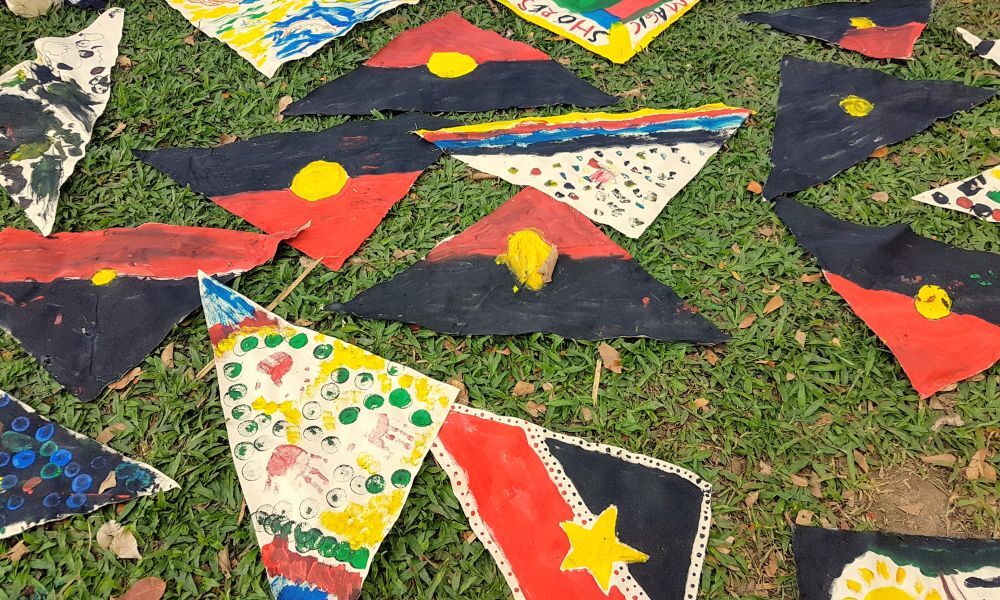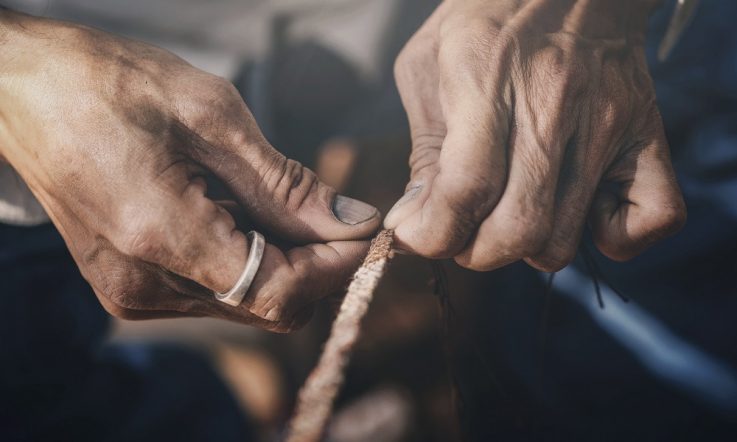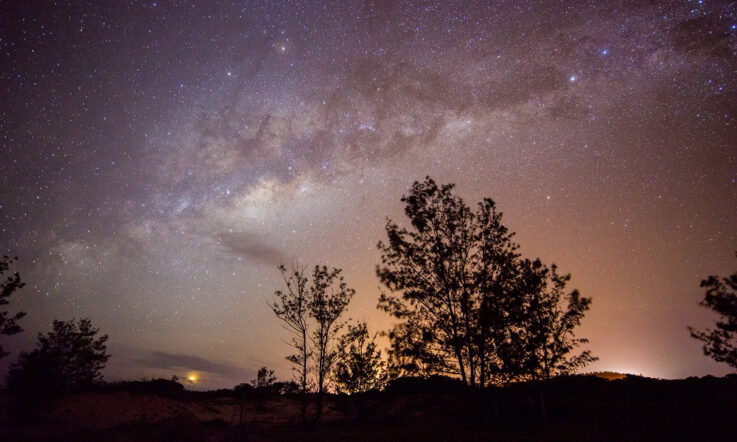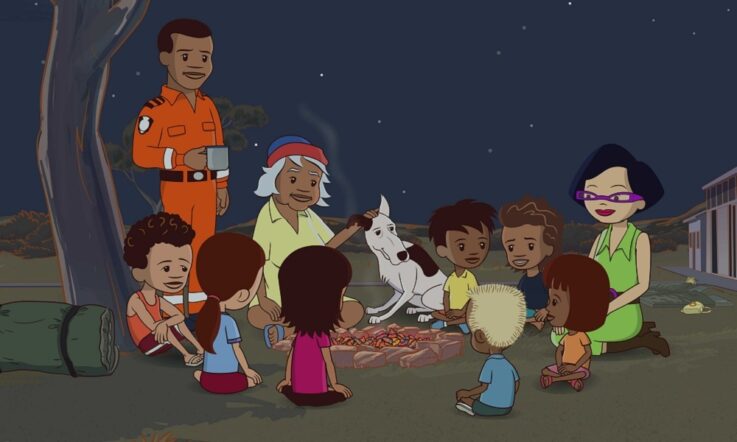Held in the first week of July in Australia each year, NAIDOC Week is an opportunity to celebrate and recognise the history, culture and achievements of Aboriginal and Torres Strait Islander peoples.
This year’s theme is Get Up! Stand Up! Show Up! It celebrates the proud history and commitment of Aboriginal and Torres Strait Islander people to continue to drive and lead change and highlights the need for Australia to move beyond intentions, toward action.
This year, NAIDOC Week will be held from 3-10 July. While it takes place during school holidays in Australia, there are plenty of ways school communities can get up, stand up, and show up together for First Nations people.
Teaching resources
SBS Learn has published a teacher resource guide and accompanying downloadable booklet for educators to access discussion questions, activities, resource links, classroom videos and more. The guide is authored by Kelly Ware, a Yankunytjatjara and Wirangu descendant and classroom, specialist reading, and primary art teacher.
The guide is designed for Years F-10 and is organised with hyperlinks for easy exploration of content by year level. There are links to the general capabilities within the Australian Curriculum, as well as cross-curriculum priorities including Aboriginal and Torres Strait Islander Histories and Cultures, and Sustainability.
One of the key suggestions is for early years educators to dedicate time each day during NAIDOC Week and beyond to watch an episode of Logie award-winning animated TV series Little J & Big Cuz. The series is aligned with the Australian Early Years Learning Framework and accompanied by free resources for educators.
In the first two seasons, episodes were translated from English into eleven Indigenous languages including Arrernte, Warlpiri, Djambarrpuyngu and Pitjantjatjara. With season three (released in late-2021) featuring new Kriol translations, there is much to explore.
NAIDOC Week 2022 posters are also available for free download, and feature the winning artwork of the National NAIDOC poster competition, designed by Gudanji/Wakaja artist Ryhia Dank.
School activities and events
Newtown State School
Newtown State School in Toowoomba, Queensland, is celebrating NAIDOC Week this year with activities set to take place during the school term.
In 2021, the school engaged with David McCarthy (‘Dook’), a local Indigenous artist, and Daryl Docherty, Regional Community Education Counsellor at the Department of Education and Training, to align the school values of ‘Safe, Respectful and Responsible’ with animal totems that were selected by staff:
- Safe: Ngui (Emu)
- Respectful: Gula (Koala)
- Responsible: Wombat
- What it means to belong to Newtown State School: Gurugara (Kookaburra)
‘During the [school] week the students from the Culture Committee will be hosting lunch time events for all staff and students. There will be t-shirt making, story book reading, Indigenous games, art workshops and Indigenous author visits,’ Connor Russell, Year 5 teacher and Co-Chair of the Embedding Culture Committee tells Teacher.
‘We are also hosting a Community Expo and Twilight Markets event at the school which will showcase local Indigenous artisans, local Indigenous music, and other community stalls... Both staff and students will organise this event and you will see many students helping on the night.’
Reflecting on why NAIDOC Week is important to his school community, Russell says, ‘On average each year, Newtown has up to 25 per cent of enrolled students identifying as Aboriginal or Torres Strait Islander. Ensuring that these students are given opportunities to engage with their culture at school and at home allows them to share part of their lives with their classmates.’
‘As a school we are committed to embedding culture throughout the whole school not just in the special weeks. We are fortunate to have both an Embedding Culture Committee, which is made up of parents and staff, and also a student-lead Culture Committee who look at various ways to embed culture from a student perspective.’
Badger Creek Primary School
Located across the road from the Healesville Sanctuary in the outer east of Victoria, Badger Creek Primary School celebrates the culture, contributions and knowledges of First Nations people throughout the year through their involvement in the Victorian Department of Education and Training’s program Campfire Conversations.
They started participating in the program this year, which gives the school and local community an opportunity to help First Nations people develop self-determination in education.
‘We endeavoured to get our first [campfire conversation] happening in first term, which was successful – we had a number of families turn up. And their request was that it continue, and that they wanted to attend every term,’ Nerae Preece, Principal at Badger Creek Primary School, tells Teacher.
The event was open both to families of students attending Badger Creek, and those attending other schools, to talk about the needs and wants of First Nations people in education and how that could look moving forward. It has now become an event the school community holds each term.
‘We had our second one just at the end of Reconciliation Week. And once again another good turnout with some really interesting conversations. …The conversation was around shame and racism. And so from that information we’re working towards redeveloping our bullying and anti-racism policies as well. So it’s feeding into things that we can directly impact in our governing of our school.’
As a result of the campfire conversations and other initiatives, Badger Creek is now working towards developing their own Reconciliation Action Plan. ‘That’s been important, because it’s helping us reflect on what we could be doing to make sure that our workplace and our learning space is culturally safe for everybody, but in particular First Nations people,’ Preece explains.
Reflecting on why NAIDOC Week is important to her school community, she says, ‘It’s a celebration of all the amazing contributions that First Nations people have contributed to our Community across Australia, but also particularly in our area. Badger Creek was formerly known as Coranderrk School which was one of the first self-determined schools in Victoria… It’s important in remembering the history of where our school’s been and where it’s going on its future journey. And it’s part of truth telling.’
How is your school celebrating NAIDOC Week? What opportunities exist to invite Traditional Owners, Elders and Aboriginal and Torres Strait Islander community members into your school to share their perspectives, knowledge and experiences?
The teaching resources mentioned in this article can be used throughout the year with students from Foundation to Year 10. With a colleague, take a look at the activities – how can you integrate one or more into your teaching for the rest of the school year?



